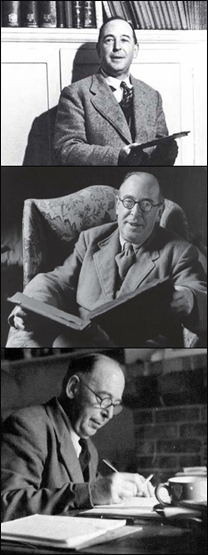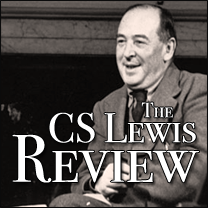
The Voyage of the Dawn Treader Resources
The Chronicles of Narnia: The Voyage of the Dawn Treader
(Copyright 2010-11 by Bruce L. Edwards. Click here for Permissions information)
[To schedule a presentation or seminar on Narnia, contact me here]
Reading Comprehension Questions
- Compare Edmund and Eustace in their respective developments as Narnian visitors. How are their pathways similar from their time of arrival to their eventual “acceptance” of Narnian customs and ethics? How are they different? Who are the chief agents in their path to maturity?
- It seems commonplace now, but when Lewis wrote The Chronicles, it was unusual for children’s authors, male or female, to give female characters as central a role as Lucy has in these first three tales that are primarily “boys’ epics.” Think carefully about this observation. Is it true that Lucy’s role in the stories is more prominent than that of the other Pevensie children? If you agree, what is it about her characterization in the stories that helps to explain why she deserves this prominent role?
- The “search for joy” has been mentioned consistently in our reading and discussion; how does this help sum up Reepicheep’s aspiration in The Voyage of the “Dawn Treader”?
- When Caspian insists on renouncing his throne and argues that he, too, should head to the Utter East with Reepicheep and the rest, how is he persuaded otherwise? Why is it crucial that he not combine his quest with Reepicheep’s?
- What is “Aslan’s Country”? Explain.
Thematic Discussion Questions
- The Voyage of the “Dawn Treader,” is, in effect, a sequel to Prince Caspian, and the only story in the series that retains so many of the same characters. How does this affect your appreciation and involvement in the narrative?
- Who is Eustace Clarence Scrubb, and why is so much attention paid to his name?
- The narrator makes much of Eustaces schooling and its supposedly “progressive” nature. What is Lewis trying to satirize or ridicule here? What are the evident effects of Eustaces schooling on his behavior?
- What are Reepicheeps motives for serving on the crew? Why would he wish to leave Narnia to travel to the Utter East?
- On the Island of the Voices, Lucy discovers the Dufflepuds; what are their unique qualities, and how does Lucy end up serving them?
- Lucy undergoes a particular temptation in the episode with the Magicians Book; describe this challenge and how it is resolved.
- Who is told at the end that they cannot return to Narnia again? When they protest, Aslan tells them that he is also known in their world, but by another name. What is Lewis clear implication here about what Aslans other name is?
Personal Reflection Questions
- The narrator of The Voyage of the “Dawn Treader” introduces the new Narnian visitor this way: “There was a boy called Eustace Clarence Scrubb, and he almost deserved it. . .” Lewis was sensitive about his own name, Clive Staples Lewis, and informally changed it to “Jack” when he was a small boy. Is there anything intrinsically funny or offensive about Eustace’s name? Do you ever wish you had a different name? Why or why not? What do our names convey about our character or self-worth?
- Eustace’s greed and pride help turn him into a dragon in the story, and his “undragoning” becomes symbolic of his need to repent of these traits and change for the better. Use your imagination to create a similar kind of transformation that might symbolize a habit, temptation, or flaw that you or someone you know possesses. How might “repentance” be depicted in this new scenario?
- Lucy is tempted to take a “shortcut” to beauty by casting a spell. Have you ever had to face such temptation for a temporary effect? Have you ever tried to seem better educated, more connected, etc., in order to get a promotion or to impress someone? How did you resist this temptation? If you did not, what were the consequences?
- Life is about change and growth. What features of Prince Caspian and The Voyage of the “Dawn Treader” cause you to reflect the most on the growth and changes in your life? Who undergoes the most change during the two stories, and what are the reasons for the change? In thinking of these changes and your own life, is there any character that you especially identify with? Why?
- Lewis once remarked to the British Library Association that he was sensitive to the charge that adventures in the Dark Island in The Voyage of the “Dawn Treader” may be too intense for some children. He said, “I suffered too much from night-fears myself in childhood to undervalue this objection. I would not wish to heat the fires of the private hell for any child.” Do you think the events depicted on Dark Island—or anywhere else in the Narnian tales so far—are too fearful for some readers? Why or why not?
What We Learn: Image, Character, Theme
Image
- Dragons and Undragoning: Dragons are legendary hoarders and misers, collecting precious jewels and gold and protecting them with their fiery breath. Edmund is shown to have a miserly spirit; by morphing him into a dragon, Lewis demonstrates that character is more than skin deep—it’s soul deep. His “undragoning” by Aslan is an image of repentance and restoration.
- Utter East: Like Shangri La, the Utter East is the name for a mystical place, the route to Aslan’s Country, a place of rest and ultimate joy. But the timing for such a journey is in Aslan’s hands, as both Reepicheep and Caspian discover.
- Lion/Lamb: Aslan’s transformation from Lion to Lamb and Lion again is a familiar Christian image. As Lion, Aslan/Christ is ruler and king, to whom all owe allegiance; as Lamb, he is a servant and a sacrifice in place of those he loves. There is also an echo of the Biblical prophet, Isaiah, who spoke of a time when “the lion shall lie down with the lamb,” and peace would reign. In the character of Aslan, one has both tender authority and comforting peace.
Character
- Eustace. Eustace’s lack of imagination is the source of many of his offenses on the “Dawn Treader.” As the product of an unconventional upbringing (he calls his parents by their first names), he has a lot to unlearn in Narnia.
- Dufflepuds: These comical but troublesome former dwarves are victims of the magician Coriakin’s spell to contain their mischief. He first made them monopods, and then made them invisible. They present some comic relief to the crew as they head toward the climax of their journey.
- Ramandu’s Daughter: For the first time in Narnia, a familiar fairy tale element emerges at Ramandu Island: a beautiful and mysterious maiden with long, golden hair appears with a secret that will assist Caspian to complete his quest—and later become his Queen “and the mother and grandmother of great kings.” To emphasize the awe with which she is received, Lewis gives her no personal name in The Chronicles.
- Ramandu. Ramandu is called a “star at rest,” and has retired to become a magician on the island where Caspian and crew learn how to break the enchantment of the Three Sleepers. Ramandu provides a “star’s perspective” on Narnia’s history—and rebukes Eustace for suggesting that a star is merely “a huge ball of flaming gas,” for what something “is,” is more than what it is “made of.”
Theme
- We Become What We Behold: Eustace’s general sour attitude, laziness, and greed lead him, and us, into the dragon’s lair—where we, if we succumb to temptation, become what we envision. This is a permanent fix unless we choose to repent. The repeated pursuit of anything, unless it is ultimate joy, leads to ruin.
- Lucy’s Vanity: For all her spiritual sensitivity and strength, Lucy does have weaknesses, and these lead to an insecurity about what her friends think and an inferiority complex about her own looks. As a result, when she is alone with the Magician’s Book, she is tempted to cast a spell to make herself irresistibly beautiful. Thwarted by Aslan’s gaze, she realizes her self-worth rests not in physical appearance, but in being accepted for who she is as well as having Aslan’s approval.
- “Another Name”: Aslan comforts Lucy and Edmund, who will not be returning to Narnia again, by reminding them that he is present in both worlds, but in theirs “under another name.” The implication is that Aslan has become incarnate in more than one world and that if they seek him, they will find him.



